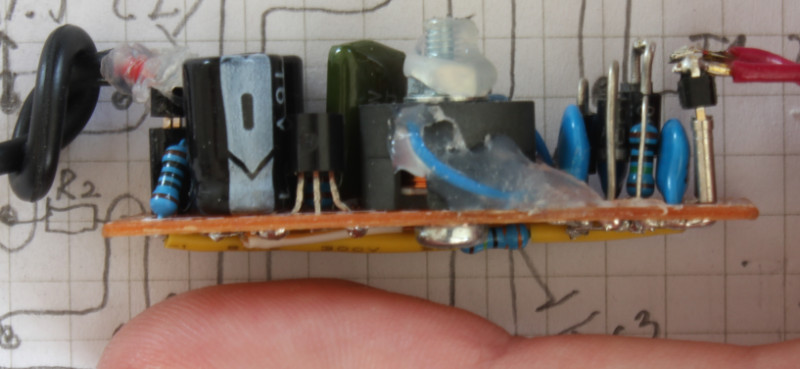So, there's these folks that call themselves "rationalists". You may
have seen them online. They refer to "Bayes" a lot, run paid
"rationality workshops", collect money to save the world from skynet,
and the like. You might begin to wonder, what do they actually know
about rationality?
Generally, the truth value of the statements they'd make is a pretty
elusive matter - they focus on un-testable propositions such
as which interpretation of quantum mechanics is "obviously correct" if
you don't know enough of it to even compute atomic orbitals, whenever future
super-intelligence is super enough to restore your consciousness from a frozen brain,
or how many lives you save by giving them a dollar.
But once in a blue moon they get bold and make well defined statements.
Being Half Rational About Pascal's Wager is Even Worse is one of such pieces where the rationalism can actually be tested against facts.
Listen to this:
For example. At one critical junction in history, Leo Szilard, the
first physicist to see the possibility of fission chain reactions and
hence practical nuclear weapons, was trying to persuade Enrico Fermi to
take the issue seriously, in the company of a more prestigious friend,
Isidor Rabi:
I said to him: "Did you talk to Fermi?"
Rabi said, "Yes, I did." I said, "What did Fermi say?" Rabi said,
"Fermi said 'Nuts!'" So I said, "Why did he say 'Nuts!'?" and Rabi
said, "Well, I don't know, but he is in and we can ask him." So we went
over to Fermi's office, and Rabi said to Fermi, "Look, Fermi, I told you
what Szilard thought and you said ‘Nuts!' and Szilard wants to know why
you said ‘Nuts!'" So Fermi said, "Well… there is the remote possibility
that neutrons may be emitted in the fission of uranium and then of
course perhaps a chain reaction can be made." Rabi said, "What do you
mean by ‘remote possibility'?" and Fermi said, "Well, ten per cent."
Rabi said, "Ten per cent is not a remote possibility if it means that we
may die of it. If I have pneumonia and the doctor tells me that there
is a remote possibility that I might die, and it's ten percent, I get
excited about it." (Quoted in 'The Making of the Atomic Bomb' by
Richard Rhodes.)
This might look at first like a successful application of "multiplying a
low probability by a high impact", but I would reject that this was really going
on. Where the heck did Fermi get that 10% figure for his 'remote
possibility', especially considering that fission chain reactions did in fact turn
out to be possible? If some sort of reasoning had told us that a
fission chain reaction was improbable, then after it turned out to be
reality, good procedure would have us go back and check our reasoning to
see what went wrong, and figure out how to adjust our way of thinking
so as to not make the same mistake again. So far as I know, there
was no physical reason whatsoever to think a fission chain reaction was
only a ten percent probability. They had not been demonstrated
experimentally, to be sure; but they were still the default projection
from what was already known. If you'd been told in the 1930s that
fission chain reactions were impossible, you would've been told
something that implied new physical facts unknown to current science
(and indeed, no such facts existed).
It almost looks like he's trying to paint in your mind a picture: Enrico Fermi knows that fission happens, but Fermi is too irrational or dull to conclude that chain reaction is possible. Other one of these self proclaimed rational
super-geniuses made similar assumptions
at one of those "rationality workshops". Ohh Fermi wasn't stupid, he was just stuck in that irrational thinking which we'll teach you to avoid.
Easy picture to paint when nuclear fission is associated with chain reaction, but no. Just no.
What Fermi did know was that nuclei can be fissioned by neutrons, meaning, that
when neutron hits heavy nuclei, they *sometimes* split in two roughly
equal pieces (sometimes they even split into three pieces, and often do
not split at all). Rarely, I must add, because they were doing
experiments with natural uranium which is mostly uranium 238, or
U238, and U238 tends to absorb neutrons without splitting.
What was entirely unknown at the time of Fermi's estimate,
is that any neutrons get emitted immediately as the nucleus splits (or
even after), that it is enough neutrons to sustain the chain reaction
(you need substantially more than 1 because neutrons also get captured
without fissioning), and that they have the right energy.
So, fission does not logically imply there are neutrons emitted, and
even if there are neutrons emitted, you need a complicated, quantitative calculation to see if
there will be a self sustaining chain reaction or not. Many of the more stable nuclei can be fissioned, but can not sustain chain reaction; for example, U238.
What Fermi and Szilard did first was to do
quantitative measurements and find out if there are secondary neutrons,
how many on average, and of what energy, and how often are they absorbed before causing fission. Which was very difficult as all
evidence is very indirect and many calculations must be made to get
from what you measure to what happens.
When they actually did the necessary measurements and learned the
facts from which to conclude possibility of a chain reaction without new
facts, Fermi did the relevant calculations and concluded that
chain reaction was possible, with probability fairly close to 1. He
proceeded to do the calculations to find the size of, and build, a
nuclear reactor, with quite clever safety system, with reasonable
expectation that it will work (and reasonable precautions about any yet
unknown positive feedback effects).
Contrary to the impression you might get from reading Yudkowsky, once
the quantitative measurements actually implied the possibility of a self
sustaining chain reaction unless there's some new facts, Fermi of
course assigned fairly high probability to it. Extrapolation from known
facts was never an issue.
You're welcome to research the story of Chicago Pile 1 and check for yourself.
Case closed as far as Fermi goes. Now on to learning the lessons from
someone being very wrong, this someone not being Enrico Fermi.
Was that historical info some esoteric knowledge which is hard to hunt down? No, it is apparently explained even in the
same book that Yudkowsky is quoting :
Fermi was not misleading Szilard. It was easy to estimate the explosive
force of a quantity of uranium, as Fermi would do standing at his office
window overlooking Manhattan, if fission proceeded automatically from
mere assembly of the material; even journalists had managed that simple
calculation. But such obviously was not the case for uranium in its
natural form, or the substance would long ago have ceased to exist on
earth. However energetically interesting a reaction, fission by itself
was merely a laboratory curiosity. Only if it released secondary
neutrons, and those in sufficient quantity to initiate and sustain a
chain reaction, would it serve for anything more. "Nothing known then,"
writes Herbert Anderson, Fermi's young partner in experiment,
"guaranteed the emission of neutrons. Neutron emission had to be
observed experimentally and measured quantitatively." No such work had
yet been done. It was, in fact, the new work Fermi had proposed to
Anderson immediately upon returning from Washington. Which meant to
Fermi that talk of developing fission into a weapon of war was absurdly
premature.
as well as in many other books. They didn't read it. Lesson: don't write about things you do not know.
What did they read instead to draw their conclusions from? Another quote from Yudkowsky:
After reading enough historical instances of famous scientists
dismissing things as impossible when there was no physical logic to say
that it was even improbable, one cynically suspects that some
prestigious scientists perhaps came to conceive of themselves as senior
people who ought to be skeptical about things, and that Fermi was just
reacting emotionally. The lesson I draw from this historical case is
not that it's a good idea to go around multiplying ten percent
probabilities by large impacts, but that Fermi should not have pulled
out a number as low as ten percent.
Lesson: Don't do that. Don't scan for instances of scientists being
wrong, without learning much else. If you want to learn rationality,
learn actual science. This whole fission business was such a mess. It is
a true miracle they managed to unravel everything based on very
indirect evidence, in such a short time. There is a lot to learn here.
Also, probability is an elusive matter. If there
is a self sustaining chain reaction, he's "wrong" for assigning 10%, 90% would be closer,
and 99% would be closer still. If there is no self sustaining chain reaction, he's
"wrong" for assigning 10% rather than 0.1% . If someone said that the
probability of die rolling 1 is 1/6 , rolling 2 is 1/6 , and so on,
after die has been looked at, they're 6 times wrong.
But the important thing in probability is that on average 1 out of 10 times that
Fermi assigns something 10% probability, the matter should turn out to
be true.
Ohh, and on the main enterprise of saving the world: this attitude is precisely the sort of thing that shouldn't be present. If you grossly underestimate even Fermi, and grossly overestimate how much you can understand about such topic based on a very cursory reading, well, your evaluation of the living people, and active subjects, is not going to be any better.






